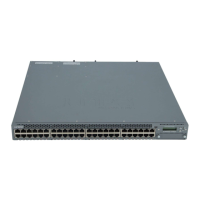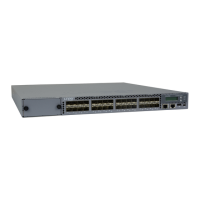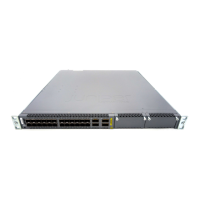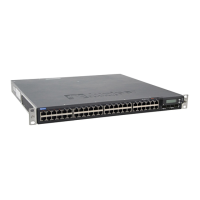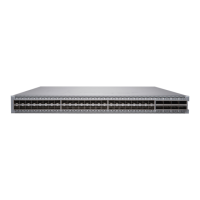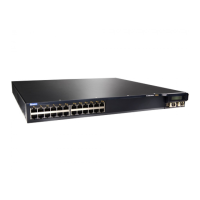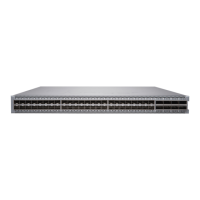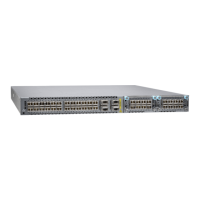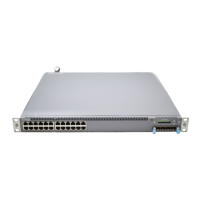Use of third-party opcal modules with high-power consumpon (for example,
coherent ZR or ZR+) can potenally cause thermal damage to or reduce the lifespan of
the host equipment. Any damage to the host equipment due to the use of third-party
opcal modules or cables is the users’ responsibility. Juniper Networks will accept no
liability for any damage caused due to such use.
Figure 106 on page 195 shows how to install a QSFP+ transceiver. The procedure is the same for all
types of transceivers except the QSFP28 and CFP transceivers. Note that this procedure is the same for
SFP+ and SFP28 transceivers which will be used in EX4100 and EX4100-F.
To install a transceiver:
CAUTION: To prevent electrostac discharge (ESD) damage to the transceiver, do not
touch the connector pins at the end of the transceiver.
1. Wrap and fasten one end of the ESD wrist strap around your bare wrist, and connect the other end
of the strap to the ESD point on the switch.
2. Remove the transceiver from its bag.
3. Check to see whether the transceiver is covered with a rubber safety cap. If it is not, cover the
transceiver with a rubber safety cap.
LASER WARNING: Do not leave a ber-opc transceiver uncovered except when
inserng or removing a cable. The rubber safety cap keeps the port clean and protects
your eyes from accidental exposure to laser light.
4. If the port in which you want to install the transceiver is covered with a dust cover, remove the dust
cover and save it in case you need to cover the port later. If you are hot-swapping a transceiver, wait
for at least 10 seconds aer removing the transceiver from the port before installing a new
transceiver.
5. Using both hands, carefully place the transceiver in the empty port. The connectors must face the
chassis.
CAUTION: Before you slide the transceiver into the port, ensure that the transceiver is
aligned correctly. Misalignment might cause the pins to bend, making the transceiver
unusable.
6. Slide the transceiver in gently unl it is fully seated. If you are installing a CFP transceiver, hand
ghten the capve screws on the transceiver.
194
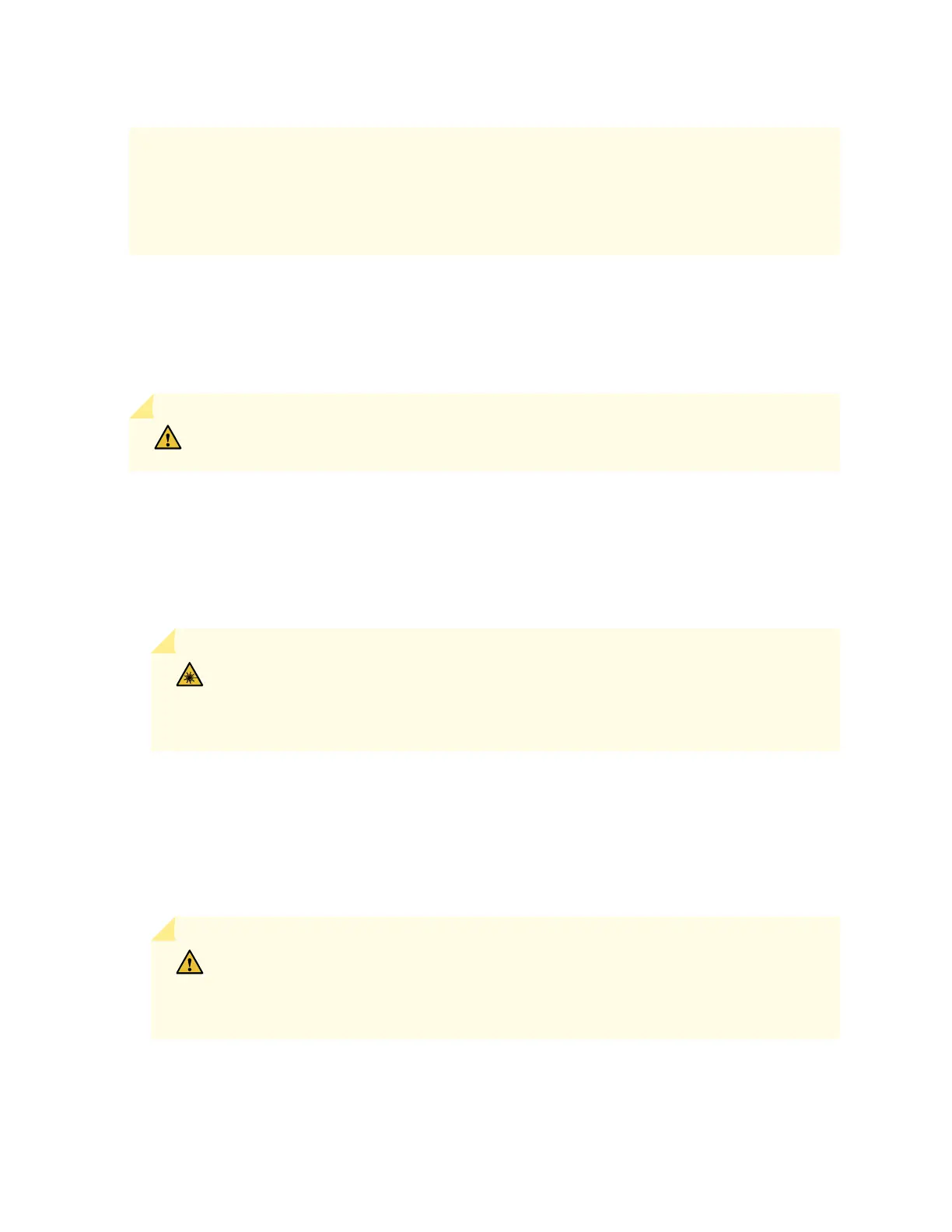